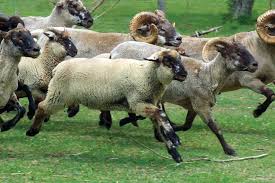Breeds of sheep play a vital role in agriculture, providing essential resources such as wool, meat, and milk. These domesticated animals are known for their adaptability to various climates and environments, making them an integral part of farming practices worldwide.
Sheep farming has a long history, dating back thousands of years, and has evolved to include numerous breeds, each with unique characteristics and benefits.
Understanding different sheep breeds is crucial for farmers and livestock enthusiasts. Each breed has specific traits that suit various purposes, whether for wool production, meat quality, or milk yield. For instance, some breeds are highly regarded for their fine wool, while others are bred primarily for their meat.
Moreover, certain breeds can thrive in arid regions, while others are more suited to lush pastures. This diversity allows farmers to select breeds that best meet their agricultural needs and environmental conditions.
One of the most prominent wool-producing breeds is the Merino. Renowned for its soft, high-quality wool, the Merino has been a preferred choice for textile production for centuries. Its ability to adapt to different climates and its high fertility rate make it a popular option among sheep farmers.
Another significant breed is the Suffolk, recognized for its excellent meat quality and rapid growth rate. Suffolk sheep are known for their muscular build and are often raised for lamb production.
In addition to wool and meat breeds, there are also milk-producing sheep, such as the East Friesian. This breed is known for its high milk yield, making it a valuable asset for dairy farmers.
East Friesians are often used in cheese production, contributing to the growing market for sheep’s milk products. The adaptability of this breed to various environments further enhances its appeal in dairy farming.
Some breeds of sheep have been developed for their unique characteristics, such as the Jacob sheep, which is recognized for its distinctive spotted fleece and multiple horns. These traits make the Jacob sheep a favorite among breeders and enthusiasts for their aesthetic appeal and uniqueness.
Similarly, the Barbados Blackbelly is known for its resilience to heat and parasites, making it suitable for tropical climates. Its meat is also prized for its flavor and texture, adding to its popularity among meat producers.
The economic significance of sheep breeds cannot be overstated. They contribute to the livelihoods of millions of people globally, providing income through the sale of wool, meat, and milk.
Moreover, sheep farming can be a sustainable agricultural practice, as sheep can graze on land that is unsuitable for other types of livestock, helping to maintain pasture health and prevent land degradation.
Classification of Sheep Breeds
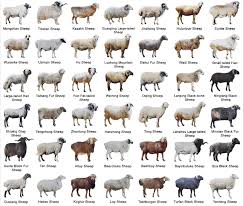
1. Meat Breeds: These sheep are primarily bred for their meat. They are characterized by their fast growth rates and high-quality carcasses. Common examples include the Suffolk and Hampshire breeds.
2. Dairy Breeds: Dairy sheep are raised for milk production, which is used to make cheese and other dairy products. They are known for their good milking ability. Examples include the East Friesian and Lacaune breeds.
3. Wool Breeds: These breeds are specifically bred for their wool. They produce high-quality fleece suitable for various wool products. Notable wool breeds include Merino and Rambouillet.
4. Dual-Purpose Breeds: Some sheep breeds are raised for both meat and wool. These breeds offer versatility to farmers. Examples include the Dorset and Polypay breeds.
Characteristics of Sheep Breeds
1. Size and Weight: Sheep breeds vary significantly in size and weight. Larger breeds, like the Suffolk, typically weigh between 250-350 pounds, while smaller breeds, such as the Finnsheep, weigh around 150-200 pounds.
2. Wool Quality: The quality of wool differs among breeds. Fine wool breeds, like Merino, produce soft, fine fibers, while medium wool breeds, like Columbia, produce coarser fleece.
3. Color and Markings: Sheep can be white, black, brown, or a combination of colors. Certain breeds have distinctive markings, such as the black face of the Suffolk breed.
4. Adaptability: Some breeds are more adaptable to harsh climates than others. Breeds like the Katahdin are known for their resilience in varying environmental conditions.
5. Temperament: Sheep breeds also vary in temperament. While some, like the Dorset, are known for their calm demeanor, others, such as the Rambouillet, can be more energetic and curious.
Read Also: Factors Affecting Mineralization and Nitrification Dendrobium Nobile Medicinal Plant
Breeds for Wool Production
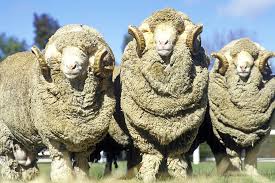
1. Merino: Known for producing some of the finest wool in the world, Merino sheep have soft, dense fleece. They are highly sought after for high-quality wool products.
2. Rambouillet: This breed is a direct descendant of Merino sheep and produces fine wool. Rambouillet sheep are hardy and adaptable, making them suitable for various climates.
3. Lincoln: Lincoln sheep produce long, lustrous wool that is strong and durable. Their wool is often used in hand-knitting and weaving.
4. Columbia: Columbia sheep are known for their medium wool, which is versatile and suitable for various wool products. They are a dual-purpose breed, valued for both meat and wool.
5. Dorset: While primarily recognized for their meat, Dorset sheep also produce decent-quality wool. Their ability to breed out of season makes them a practical choice for wool production.
Breeds for Meat Production
1. Suffolk: Known for their rapid growth and excellent meat quality, Suffolk sheep are one of the most popular meat breeds. They have a muscular build and produce a high-quality carcass.
2. Hampshire: Hampshire sheep are recognized for their ability to gain weight quickly and produce lean meat. They have a distinctive appearance, characterized by their dark face and legs.
3. Dorper: Originating from South Africa, Dorper sheep are hardy and well-adapted to arid environments. They are prized for their meat quality and have a high feed conversion rate.
4. Texel: Texel sheep are known for their exceptional muscle development and produce lean, high-quality meat. They are a popular choice among meat producers in Europe.
5. Katahdin: This breed is known for its resistance to parasites and ability to thrive in various climates. Katahdin sheep are primarily raised for meat and are also popular for their ease of care.
Breeds for Dairy Production
1. East Friesian: East Friesian sheep are one of the highest milk-producing breeds globally. They are known for their good milking ability and produce milk rich in butterfat and protein.
2. Lacaune: This French breed is renowned for its milk, which is primarily used for making Roquefort cheese. Lacaune sheep have good milking capabilities and are well-suited for dairy production.
3. Awassi: Awassi sheep are native to the Middle East and are known for their high milk yield and adaptability to arid climates. Their milk is rich in fat and is often used in traditional dairy products.
4. Manchega: This Spanish breed is famous for its high-quality milk, which is used to produce Manchego cheese. Manchega sheep are valued for both their milk and meat.
5. Kamori: Originating from Pakistan, Kamori sheep are recognized for their high milk production and adaptability. They are particularly valued for their creamy milk, used in various dairy products.
Read Also: 12 Medicinal Health Benefits of Emilia Sonchifolia (lilac tasselflower)
Dual-Purpose Sheep Breeds
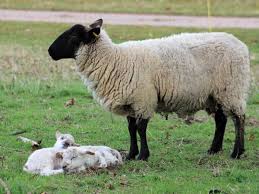
1. Dorset: Dorset sheep are versatile, valued for both meat and milk production. They are known for their ability to breed out of season, allowing for multiple lambings each year.
2. Polypay: This breed was developed to maximize both meat and wool production. Polypay sheep are known for their rapid growth rates and good maternal qualities.
3. Romanov: Romanov sheep are dual-purpose, producing both high-quality meat and wool. They are known for their hardiness and adaptability to various climates.
4. Corriedale: This breed is valued for both wool and meat production. Corriedale sheep have a good balance of wool quality and growth rate, making them suitable for various farming systems.
5. Barbado: Barbado sheep are known for their hardiness and adaptability. They are primarily raised for meat but also produce a decent quality of wool.
Popular Sheep Breeds Worldwide
1. Merino: Renowned for its fine wool, Merino sheep are among the most popular breeds worldwide. They are primarily raised for wool production but also have good meat quality.
2. Suffolk: As one of the most popular meat breeds, Suffolk sheep are widely raised in many countries due to their high-quality meat and growth rates.
3. East Friesian: This breed is highly sought after for its exceptional milk production and is popular in dairy farming across the globe.
4. Hampshire: Hampshire sheep are valued for their meat quality and are widely raised in various regions for their rapid growth.
5. Dorper: Known for their adaptability and meat quality, Dorper sheep are gaining popularity in various countries, especially in arid regions.
Rare and Heritage Sheep Breeds
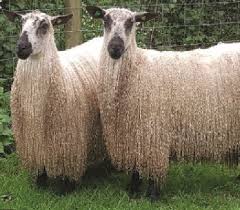
1. Jacob: Jacob sheep are a rare breed known for their distinctive appearance, often with two to four horns. They are valued for their unique wool patterns and are raised for both meat and wool.
2. Lincoln: This heritage breed is known for its long wool and large frame. Lincoln sheep produce high-quality meat and are often used in crossbreeding programs to improve wool quality.
3. Scottish Blackface: A hardy breed with a long history, Scottish Blackface sheep are primarily raised for their meat and wool. They are well-adapted to rough terrain and harsh climates.
4. Gulf Coast Native: This breed is known for its resilience and adaptability to the southern United States’ heat and humidity. Gulf Coast Native sheep are primarily raised for meat and are recognized for their hardiness.
5. Navajo-Churro: This ancient breed is one of the first domesticated sheep in North America. Navajo-Churro sheep are valued for their unique wool and are important for cultural heritage and sustainability.
Sheep Breeds for Harsh Climates
1. Icelandic: Icelandic sheep are well-adapted to cold climates and harsh weather conditions. They are known for their dual-purpose capabilities, providing both meat and wool.
2. Katahdin: This breed is renowned for its resistance to parasites and ability to thrive in various climates, making it ideal for farmers in challenging environments.
3. Australian Merino: Adapted to the extreme conditions of Australia, Merino sheep are hardy and produce high-quality wool. They are bred for both wool and meat production.
4. Barbados Blackbelly: This breed is known for its heat tolerance and ability to thrive in warm climates. Barbados Blackbelly sheep are primarily raised for meat.
5. Hampshire: Hampshire sheep are adaptable to various climates, including harsh environments. They are valued for their growth rates and high-quality meat.
Choosing the Right Sheep Breed
1. Purpose of Farming: Determine whether the primary goal is meat, milk, wool, or a combination. This will guide the selection process.
2. Climate Adaptability: Consider the climate conditions of the farm. Choose breeds known for their resilience in local weather patterns, such as heat tolerance or cold hardiness.
3. Management Requirements: Assess the level of care and management that different breeds require. Some breeds may need more intensive management than others.
4. Market Demand: Research local market demand for specific sheep products, including meat, milk, and wool, to select breeds that align with market trends.
5. Breeding Programs: Evaluate the availability of breeding stock and the potential for genetic improvement in selected breeds.
Conservation of Sheep Breeds
1. Importance of Genetic Diversity: Conserving rare and heritage sheep breeds is crucial for maintaining genetic diversity within the livestock population, which is vital for adaptability and resilience.
2. Supporting Local Breeders: Encouraging local breeders to maintain traditional breeds helps preserve cultural heritage and contributes to sustainable agriculture.
3. Sustainable Farming Practices: Implementing sustainable practices in sheep farming can help support the conservation of diverse breeds while ensuring economic viability.
4. Educational Programs: Promoting awareness about the importance of heritage breeds through educational programs can inspire future generations of farmers to engage in conservation efforts.
5. Collaboration with Organizations: Partnering with organizations dedicated to breed conservation can provide resources and support for maintaining rare sheep breeds.
Do you have any questions, suggestions, or contributions? If so, please feel free to use the comment box below to share your thoughts. We also encourage you to kindly share this information with others who might benefit from it. Since we can’t reach everyone at once, we truly appreciate your help in spreading the word. Thank you so much for your support and for sharing!
Read Also: 8 Amazing Health Benefits to Eating Hot Peppers

